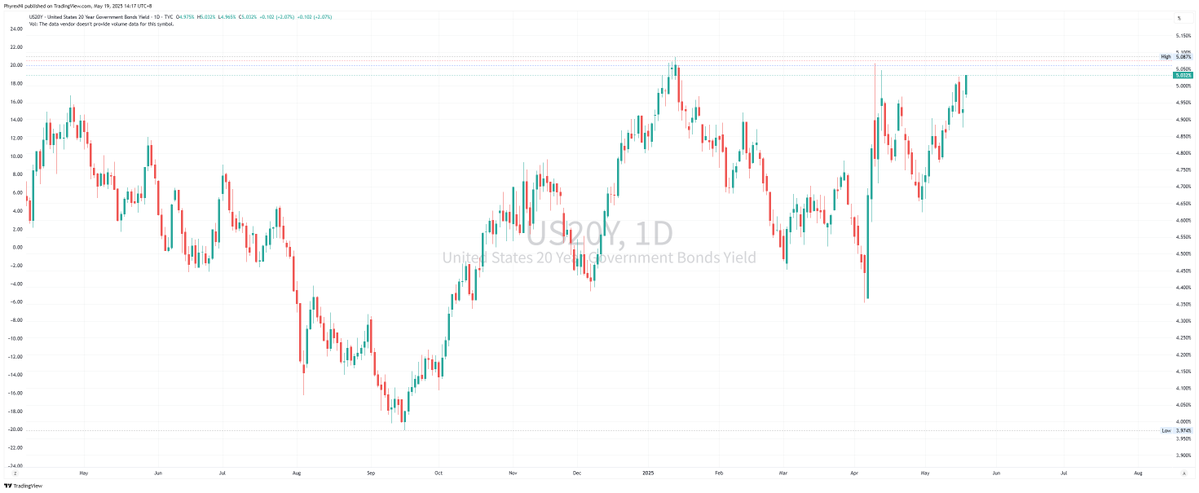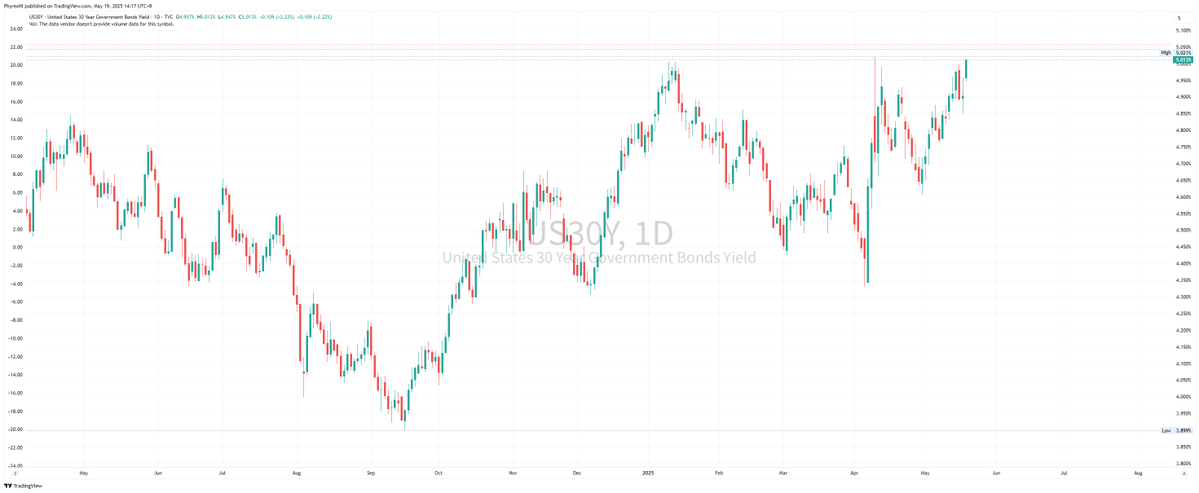Last night, I was watching Xiao Lin's video discussing the current U.S. tariff policies and economic issues...
Suddenly, I realized that the current situation in the U.S. seems to have fallen into some kind of deadlock?
Trump's goal is still to reduce government debt while suppressing China, devaluing the dollar to bring manufacturing back.
But after doing all these things, there hasn't been any significant relief for government debt. Instead, the date for the Federal Reserve's interest rate cuts keeps getting postponed...
It seems that the only way to solve this problem now is for the U.S. to experience a recession...
Because once a recession occurs, employment data will cool down, demand for goods will decrease, and the dollar's credit will be affected...
This way, the Federal Reserve can confidently cut interest rates, and the dollar, due to the credit crisis, can depreciate, driving manufacturing back. However, the sacrifice might be the long-term dominance of U.S. stocks or the dollar.
In essence, the U.S. cannot choose "I want both" between being a financial empire and a manufacturing empire. If you want to return to being a manufacturing powerhouse, you must give up the status of a financial superpower...
The question is whether Trump is willing to bear this cost?
Waking up, the U.S. bond market still reacted to Moody's downgrade of the U.S. credit rating, with yields on 20-year and 30-year bonds rising above 5%. U.S. stock futures also fell more than 1% after the opening, indicating that market sentiment was affected.
The surge in $BTC last night has already been analyzed, and it seems quite likely now. After the CME opened this morning, Bitcoin surged again, still due to the low liquidity effect, but it was pushed down as soon as the pre-market opened because there was no actual positive news over the weekend, just Besant's speech.
However, the wave from 4 AM to 6 AM was really impressive, probably causing many friends to be caught in both long and short positions. The sharp rise and fall in low liquidity is just that easy.
The current decline is mainly due to the risk-averse behavior of Asian investors. How it will transmit to the main trading time in the U.S. is uncertain, but historical data shows that the impact of a credit rating downgrade on the market is short-term.
The real game begins when the U.S. stock market opens in the evening.
This tweet is sponsored by @ApeXProtocolCN | Dex With ApeX.


72
61.5K
The content on this page is provided by third parties. Unless otherwise stated, OKX is not the author of the cited article(s) and does not claim any copyright in the materials. The content is provided for informational purposes only and does not represent the views of OKX. It is not intended to be an endorsement of any kind and should not be considered investment advice or a solicitation to buy or sell digital assets. To the extent generative AI is utilized to provide summaries or other information, such AI generated content may be inaccurate or inconsistent. Please read the linked article for more details and information. OKX is not responsible for content hosted on third party sites. Digital asset holdings, including stablecoins and NFTs, involve a high degree of risk and can fluctuate greatly. You should carefully consider whether trading or holding digital assets is suitable for you in light of your financial condition.


